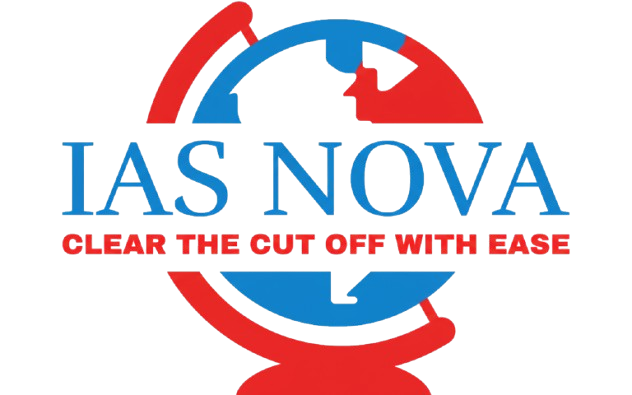Robert K. Merton’s Theory of Conformity and Deviance
1️⃣ Background and Context
Robert K. Merton (1910–2003), a key American functionalist, expanded upon Durkheim’s concept of anomie to explain deviant behavior within structured societies. Whereas Durkheim viewed anomie as a breakdown of norms during social change, Merton redefined it as a disjunction between culturally prescribed goals and socially approved means to achieve them. He called this structural imbalance the “strain” within society, which gives rise to various patterns of conformity and deviance.
Essence: Deviance is not psychological but structural — it arises when social institutions fail to provide equal means for achieving societal goals.
2️⃣ The Core Idea – Strain Between Goals and Means
Merton argued that every society sets cultural goals (like success, wealth, status) and specifies institutionalized means (like education, hard work) to achieve them. When there is equal access, individuals conform. But when means are blocked, strain develops — pushing individuals toward deviant adaptations.
| Element | Meaning | Example in American Context |
|---|---|---|
| Cultural Goals | Desirable ends promoted by society. | Material success, “American Dream.” |
| Institutionalized Means | Legitimate ways to attain goals. | Education, employment, hard work. |
| Strain | Gap between goals and means, creating pressure. | Poor individuals facing blocked mobility. |
Key Concept: The higher the emphasis on goals (success) over means (fairness), the greater the deviance.
3️⃣ Merton’s Typology of Individual Adaptation
Merton proposed five modes of adaptation that represent how individuals respond to strain. These are determined by one’s acceptance or rejection of goals and means.
| Mode of Adaptation | Cultural Goals | Institutional Means | Behavioral Type | Illustration |
|---|---|---|---|---|
| Conformity | ✅ Accept | ✅ Accept | Non-deviant | Following legitimate paths — students, professionals. |
| Innovation | ✅ Accept | ❌ Reject | Deviant | Criminals, fraudsters seeking success through illegitimate means. |
| Ritualism | ❌ Reject | ✅ Accept | Deviant (by withdrawal) | Bureaucrats rigidly following rules without purpose. |
| Retreatism | ❌ Reject | ❌ Reject | Deviant (escape) | Drug addicts, vagrants, dropouts. |
| Rebellion | 🔁 Replace | 🔁 Replace | Deviant (revolutionary) | Rebels proposing new systems (revolutionaries, extremists). |
4️⃣ Concept Flowchart – From Strain to Deviance
graph TD A[Society sets cultural goals] --> B[Institutionalized means provided] B -->|Equal access| C[Conformity] B -->|Blocked access| D[Strain develops] D --> E[Adaptations emerge] E --> F1[Innovation] E --> F2[Ritualism] E --> F3[Retreatism] E --> F4[Rebellion]
When legitimate opportunities are unevenly distributed, individuals choose alternative routes — from innovation to rebellion.
5️⃣ Merton vs. Durkheim on Anomie
| Aspect | Émile Durkheim | Robert K. Merton |
|---|---|---|
| Nature of Anomie | Normlessness during rapid social change. | Structural imbalance between goals and means. |
| Focus | Macro-level breakdown of moral regulation. | Individual adaptation to social structure. |
| Source of Deviance | Weak collective conscience. | Inequality of opportunity. |
| Example | Suicide rates increase with disintegration of norms. | Crime rates rise when success is emphasized over fairness. |
6️⃣ Application of the Theory
a. Social Class and Crime: Lower-class individuals often experience blocked legitimate opportunities, leading to innovative deviance (e.g., theft, fraud, black-market operations).
b. Bureaucratic Ritualism: Middle-class bureaucrats show ritualism by adhering to rules rigidly even when outcomes lose meaning.
c. Counter-Cultures and Revolts: Rebellion occurs when groups reject existing norms and create alternative systems — as seen in revolutionary movements or radical subcultures.
7️⃣ Evaluation of Merton’s Theory
| Strengths | Limitations |
|---|---|
| Links deviance to social structure, not psychology. | Overemphasis on lower-class deviance; neglects elite crime. |
| Provides a typology explaining various forms of deviant behavior. | Fails to explain collective deviance (e.g., riots, revolutions). |
| Integrates Durkheim’s anomie with modern society’s inequalities. | Ignores power dynamics and law-making (later addressed by conflict theorists). |
Further Developments: The theory inspired Cloward and Ohlin’s Differential Opportunity Theory and Albert Cohen’s Subcultural Theory of delinquency.
8️⃣ Extended Insight – Merton’s “Middle-Range Theories”
Merton criticized both “grand theories” (like Parsons) and micro-empiricism. He called for “middle-range theories” — empirically testable explanations linking structure and behavior. His theory of deviance exemplifies this approach: specific enough to test, yet broad enough to generalize.
9️⃣ Conceptual Diagram – Typology in Action
graph LR
A[Goals–Means Structure] --> B{Access to Legitimate Means?}
B -->|Yes| C[Conformity]
B -->|No| D{Response to Strain}
D --> D1[Innovation]
D --> D2[Ritualism]
D --> D3[Retreatism]
D --> D4[Rebellion]
Each deviation type represents a different response to institutional pressure, not necessarily moral failure.
🔟 Summary Table – Quick Revision
| Key Concept | Explanation | Mnemonic / Keyword |
|---|---|---|
| Anomie (Merton) | Disjunction between goals & means. | “Strain” |
| Conformity | Acceptance of both. | “Model Citizen.” |
| Innovation | Accept goals, reject means. | “Criminal Entrepreneur.” |
| Ritualism | Reject goals, accept means. | “Bureaucrat.” |
| Retreatism | Reject both. | “Escape Artist.” |
| Rebellion | Replace both. | “Revolutionary.” |
| Theoretical Base | Modified functionalism. | “Structural Strain Theory.” |
Conclusion
Merton’s theory reframed deviance as a product of social organization, not moral weakness. By emphasizing the tension between cultural success and institutional accessibility, he laid the foundation for sociological criminology and subcultural studies. His typology remains a powerful analytical lens for understanding how inequality fuels varied forms of conformity and deviance.
